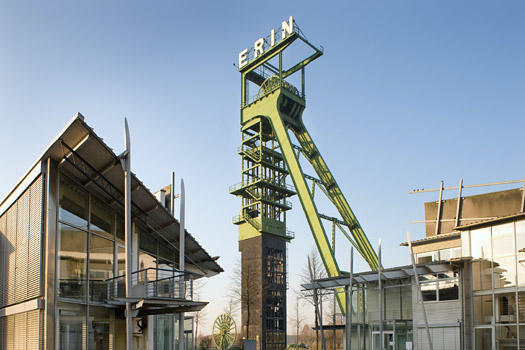Fremde Impulse Baudenkmale im Ruhrgebiet ist ein Projekt der beiden Landschaftsverbände Rheinland und Westfalen, LVR und LWL, in Zusammenarbeit mit der Kulturhauptstadt Europas RUHR.2010. weiterlesen >

Mulvany-Center Castrop-Rauxel
Als Repräsentant einer irischen Investorengruppe siedelte William Thomas Mulvany 1855 ins Ruhrgebiet über. Mulvany leitete den Aufbau der Zechen Hibernia und Shamrock in Gelsenkirchen und Herne; 1866 gründete er die eigene Zeche Erin in Castrop. Ihr gälischer Name bedeutet „grüne Insel“ und erinnert an die irische Herkunft Mulvanys
© Dietrich Hackenberg
Technology and Capital
Monuments that tell stories about foreign investments as well as foreign know-how introduced from “outside”, and immigrating industrialists are found in many places in the Ruhr Region. The foreign investor, or expert, exerts influence through his/her specific knowledge of foreign, and perhaps new, technology. Few monuments exist, from the time prior to the 19th century, which give an account of foreign investments and technology transfer. However, since 1850 today’s Ruhr Region has been decidedly lucrative for investors due its dynamic industrial development. Still today, a number of mining names such as Shamrock, Erin, Holland or Mont Cenis indicate clearly the remote ancestry of their original owners. In addition to capital, the investors brought highly developed technical knowledge, and utilised this as pioneers in the region. In this way, the investors also triggered a substantial need for labour; the influx of people intensified as a result. The Ruhr Region remains a destination for foreign investors even in the 20th and 21st century. Through the process of globalisation, international corporations and investors have a great influence on economic life in the Ruhr Region – that is, on businesses, production processes, and working structures equally.
Zu den Impulsen
hier geht es zu den einzelnenImpulstexten



